
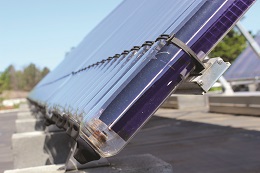 Throughout the country, communities are realizing businesses in the clean industry sector are a smart choice. With increased consumer demand for clean and green products, constituents are highly supportive of initiatives that recruit and retain clean industry. At the same time, community leaders are seeing the economic impact clean industry brings to their area. Read more about a few areas and organizations that are successfully focusing on clean industry initiatives.
Throughout the country, communities are realizing businesses in the clean industry sector are a smart choice. With increased consumer demand for clean and green products, constituents are highly supportive of initiatives that recruit and retain clean industry. At the same time, community leaders are seeing the economic impact clean industry brings to their area. Read more about a few areas and organizations that are successfully focusing on clean industry initiatives.
Bowie, Maryland
Available building space is a turnkey proposition for a clean industry manufacturer.
As Maryland’s fifth-largest city and the largest municipality in Prince George's County, Bowie has grown from a small agricultural and railroad town to one of the largest and fastest-growing cities in Maryland.
This city of 18 square miles and approximately 55,000 residents is reaching out to expand the number of companies that fall into the clean industry category. One was SemaConnect, a company that designs and manufactures electric vehicle charging stations. SemaConnect was founded in 2008 and looked to Bowie to expand its operations.
“We had well-located flex space available when SemaConnect needed it. Because of our available buildings, we are ideally situated for other clean industry-based companies looking to grow and expand,” said John Henry King, economic development director at the City of Bowie.
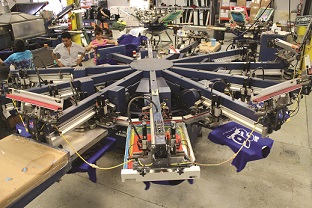
Entrenched clean industry thrives outside of the nation’s capital.
Located 16 miles southwest of Washington, D.C., Fairfax, Virginia, is a city focused on building its clean industry sector.
“We’re committed to welcoming those types of businesses and making it easier to move or locate here,” said Christopher Bruno, director of economic development at the city of Fairfax. “We’re looking at a number of tools to figure out how to better serve these companies.”
One of the environmentally conscious companies in the area is Sundog Productions, a Fairfax-headquartered T-shirt company that has been in the area more for than 25 years.
Sundog believes in reducing its impact on the environment. Sundog’s founder CAS Shiver, referred to as Top Dog, developed an eco-friendly printing system called Sea-Ink that uses seaweed-based dyes to make an ink without PVC, binders, resins or harmful chemicals. This allows for an organic garment to stay organic after a print is applied to it.
“Besides working to make our products sustainable, we also have focused heavily into the infrastructure of our factory ‘green,’ working to find ways to reduce our carbon footprint in both energy consumption and transportation,” said Shiver.
The company’s current 40,000 square-foot location uses solar-heated water, geo-thermal exchanges and recycled lighting fixtures to reduce costs and its impact on the environment. By developing a streamlined business model where all processes are created under one roof, Sundog has also eliminated waste in its supply chain.
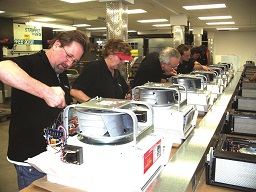
Environmental systems leads the way for clean energy in upstate New York.
Clean industry thrives in Oswego County, located in northwestern New York State on the eastern shores of Lake Ontario.
“The Fulton Companies, a commercial boiler manufacturer, and HealthWay, a manufacturer of commercial filtration systems, are just two examples of companies within our thriving clean industry sector,” said Michael Treadwell, CEcD, executive director of Operation Oswego County.
Oswego County and Central New York are part of the nationally recognized Advanced Manufacturing in Thermal and Environmental Controls (AM-TEC) initiative. The AM-TEC initiative provides a range of targeted economic development assistance to manufacturers of thermal and environmental control equipment and their suppliers. Both The Fulton Companies and HealthWay are AM-TEC partners.
The region also is home to the Syracuse Center of Excellence for clean energy and environmental systems. This collaboration of over 200 companies and institutions addresses global challenges in clean and renewable energy, indoor environmental quality and water resources.
The Fulton Companies has been in Oswego County since 1949. For its most recent $13.5 million expansion, company leaders chose Oswego County because of the area’s workforce, based on their strong work ethic and readiness to work.
HealthWay was founded when it acquired the production of an air-filtration product from another company. HealthWay’s decision to expand in Oswego County was based on the strength of the existing supply chain and experienced workforce. The company has recently expanded to meet its current and future growth.
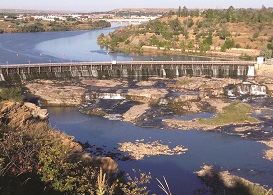
Butte, Montana
A utility focused on clean energy also spurs economic development.
For more than 100 years, NorthWestern Energy had provided electricity and natural gas in the Upper Midwest and Northwest. Today, the company serves approximately 701,000 customers in Montana, South Dakota and Nebraska.
“We’re unique in that we have a lot of clean energy sources in our supply portfolio,” said Rick Edwards, director of key accounts & economic development at NorthWestern Energy. “Our electric supply portfolio is about 60 percent clean energy and carbon free, which is huge.”
The bulk of NorthWestern’s clean energy comes from water, also referred to as hydroelectric, and wind. NorthWestern operates 11 hydroelectric facilities in Montana that have a total generating capacity of 633 megawatts, along with wind farms in Montana and South Dakota. The utility also is examining ways to add solar to the mix.
Over the past year, NorthWestern Energy has developed a sustainable energy group comprised of government officials, customers and members of the energy industry who are focusing on clean energy and sustainability initiatives. Based on the group’s recommendations, NorthWestern Energy has made a $3 million commitment to community-based renewable energy projects in Montana. It includes a $1 million solar test project in partnership with the city of Bozeman to test utility-scale solar energy on the grid, a smart grid pilot project in Helena and a school-based solar project in Missoula.
“We’re seeing a tremendous interest across Montana in solar projects. NorthWestern Energy is committed to bringing energy to our customers and communities safely, efficiently and responsibly,” said Edwards.
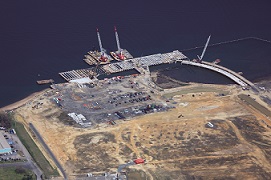
Gloucester County, New Jersey
A revitalized port targets wind power manufacturers and spurs the local economy.
The Paulsboro Marine Terminal, or Port of Paulsboro as it is commonly called, is the first major multi-purpose port constructed on the Delaware River in the last 50 years. The former BP tank farm is located in southern New Jersey’s Gloucester County, approximately 78 miles from the Atlantic Ocean.
The project is a turning a blighted property into a major port that is anticipated to be a boon to the local and regional economy for years to come. The project has brought in more than 500 construction jobs and will ultimately create 850 permanent jobs. Phase 1 is expected to be completed by the end of 2016
Part of the port is being redeveloped as a deepwater omniport able to handle a variety of bulk and break bulk cargo, as well as shipping containers. The Paulsboro Marine Terminal is also targeted to become a manufacturing and assembly center for wind turbines for the development of wind power on the East Coast.
“In addition to the direct jobs, the Paulsboro Marine Terminal will provide a number of ancillary jobs and economic boosts that will be felt throughout the region,” said Tom Bianco, director of the Gloucester County Department of Economic Development.
The completed site will encompass 190 acres of waterfront land and 2,600 linear feet of berth on the Delaware River. The site has been raised above the flood plain to resist operational shutdowns in the event of major storms. Additional infrastructure improvements to the site include a dedicated bridge and off-ramp to divert truck traffic and bypass residential neighborhoods and approximately four miles of rail track onsite.
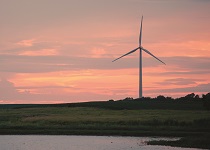 MidAmerican Energy
MidAmerican Energy
Des Moines, Iowa
A major wind project brings thousands of jobs and economic development.
Headquartered in Des Moines, Iowa, MidAmerican Energy Company is an energy provider serving 752,000 electric customers and 733,000 natural gas customers in Iowa, Illinois, Nebraska and South Dakota. Its new $3.6 billion wind project is a giant step toward realizing the company’s vision of 100 percent renewable energy for customers in the state.
The project, called Wind XI, will add up to 2,000 megawatts of wind generation from about 1,000 turbines in Iowa. The company hopes to receive approval from the Iowa Utilities Board by September, 2016 to begin construction and expects it to be completed in 2019.
It is the largest wind project MidAmerican Energy has ever undertaken – and the largest economic development project in the state’s history. Project XI is being done without asking for an increase in customer rates or financial assistance from the state to pay for it.
“We have a bold vision for our energy future,” said Bill Fehrman, CEO and president of MidAmerican Energy. “We don’t know of another U.S. energy provider that has staked out this 100 percent position. Our customers want more renewable energy, and we couldn’t agree more. Once the project is complete, we will generate wind energy equal to 85 percent of our annual customer sales in Iowa, bringing us within striking distance of our 100 percent renewable vision.”
Debi Durham, director of the Iowa Economic Development Authority, added that wind power supports as many as 7,000 jobs in Iowa. She said the industry’s growth, its cost competitiveness and job creation have been driven by the wind production tax credits.
“Wind XI puts Iowa on track to be the first state in the nation to generate more than 40 percent of its energy needs from wind power – far ahead of any other state. Today, Iowa is the only state to have crossed the 30 percent mark,” Governor Terry Branstad said. “Every wind turbine you see in Iowa means income for farmers, revenue for counties and jobs for Iowa families.”

